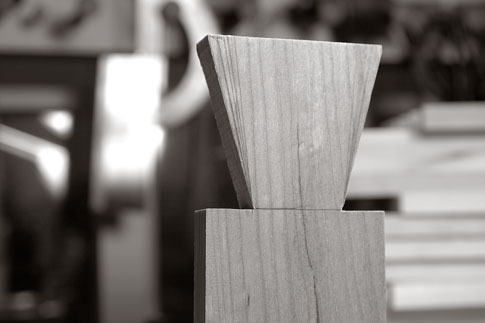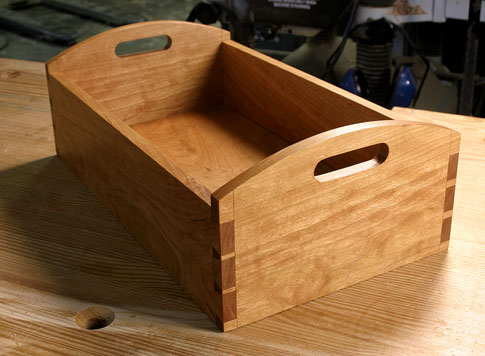
If you own enough books, it’s easy to believe almost anything and yet be certain about almost nothing.
Take dovetails. I’ve seen this joint cut with a wide variety of slopes during the last 15 years. And every person who cuts this joint has a personal or historical preference about the slope they use.
For some craftsmen, the slope varies simply because they eyeball the layout. Frank Klausz, one of the two living dovetail savants I know, says he cuts his dovetails anywhere between 10° to 15° off the vertical. Tage Frid preferred slopes of “about 10°.”
Other well-known dovetailers use marking jigs to lay out the joint, which locks them into particular angles. Rob Cosman, the other living dovetail savant, uses 10° for softwoods and 8.5° for hardwoods.
For the last 15 years I’ve been cutting dovetails, I’ve used the angles used by my first instructor: 10° for softwoods and 8.5° for hardwoods, just like Cosman. But for some reason, I’ve become dissatisfied with the way the joints look when they are visible on a piece of casework.
So I hit the library a few weeks ago, and now my head hurts from the bludgeoning. Dovetails might take their name from a bird, but reading about them is a trip down the rabbit hole.
What the Dead Guys Say
To understand how little there is to understand about dovetails, let’s take an abbreviated journey through the literature. I promise to be quick like a bunny.
Charles H. Hayward, the mid-20th century pope of hand-cut joinery, suggests three slopes: Use 12° for coarse work. Use 10° or 7° for decorative dovetails. There is no advice on hardwoods vs. softwoods.
F.E. Hoard and A.W. Marlow, the authors of the 1952 tome “The Cabinetmaker’s Treasury,” say you should use 15°. Period.
“Audel’s Carpenter’s Guide,” an early 20th century technical manual, says that 7.5° is for an exposed joint and 10° is right for “heavier work.” No advice on hardwoods vs. softwoods.
“Modern Practical Joinery” the 1902 book by George Ellis recommends 10° for all joints, as does Paul Hasluck in his 1903 “The Handyman’s Book.”
So at least among our dearly departed dovetailers, the advice is to use shallow angles for joints that show and steeper angles if your work is coarse, heavy or hidden. Or just to use one angle and be done with it.
At least in my library, the advice on softwoods and hardwoods seems to become more common with modern writing. Percy Blandford, who has been writing about woodworking for a long time, writes in his new book, “The Woodworker’s Bible,” that any angle between 7.5° and 10° is acceptable. The ideal, he says, is 8.5° for softwoods and 7.5° when joining hardwoods.
My Own Eye
One Wednesday morning I laid out and cut a bunch of these dovetails. I ignored the really shallow angles (6.5° to 8.5°) because I wanted to adopt something more angular. The 10° dovetails looked OK. The 12° dovetails looked better. The 14° tails looked better still. And the 15° looked really good as well. (The photo at the top of this entry shows a 15° dovetail with a bunch of alternatives marked on it.)
But I’ve some defect in my personality that keeps me from choosing the most extreme position, so I settled on 14°. And it’s a good thing, too, because a few days after that, the mindreaders at Lee Valley Tools released a 14° dovetail marker (I really should start wearing my tinfoil hat more). I ordered one – it seemed to be a sign.
Whatever angle you use for your joint, you can rest easy knowing that someone out there (living or dead) thinks you are doing the right thing – unless you cut something more than 15°, then you’re just nuts (or use a dovetail jig with your router).
— Christopher Schwarz
